
Memories recollected: A personal Kruger travel diary

Living on the African continent, we have a vast array of protected areas to visit. Those of us with a travel-addiction and passion for wildlife endeavour to visit them all – the Okavango, Maasai Mara and Serengeti to mention just a few. However, we sometimes overlook what we have right on our doorstep, such as the legendary Kruger National Park in South Africa. Some of us have practically grown up with it, building layers upon layers of wonderful and precious memories.
After spending a couple of years visiting other parks, I decided it was time to go back to Kruger and recollect those memories. I booked in the northern area as this would give me access to travel to the central area of the park as well.
The first thing that hit me was how dry everything was. I remember many years ago all the rivers were full and flowing, and now the Shingwedzi and Letaba were dry riverbeds with pools of water here and there. The clouds had been gathering on my arrival, and hopefully, the rain was on the way. Nevertheless, the landscapes were still remarkable.
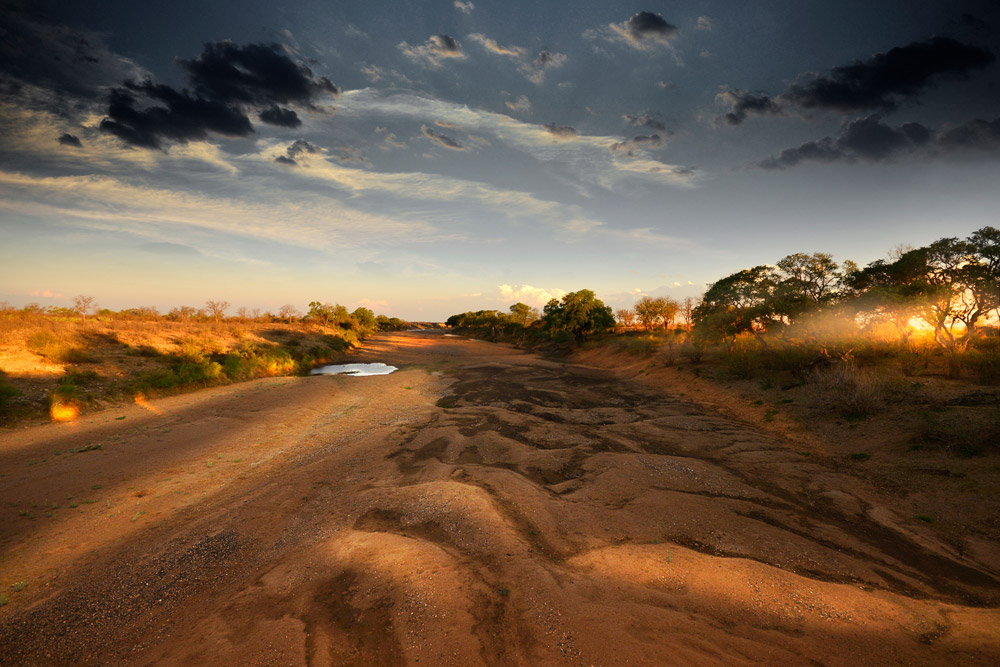
The magnificent boys
In the Kruger, there is a project called the Emerging Tuskers Project that aims to identify all of the tuskers (elephants with large tusks) in the park. More in-depth coverage of this project can be found here: Giants of the Future. Due to poaching concerns, specific locations of these tuskers, such as the ones I was fortunate to spot, are not revealed.
First, there was Nkombo – whom I managed to identify later correctly – and I was able to watch him from a safe distance while he went about his daily activities. His enormous tusks were perfect, and as the only vehicle in his presence, I felt truly honoured and in awe.
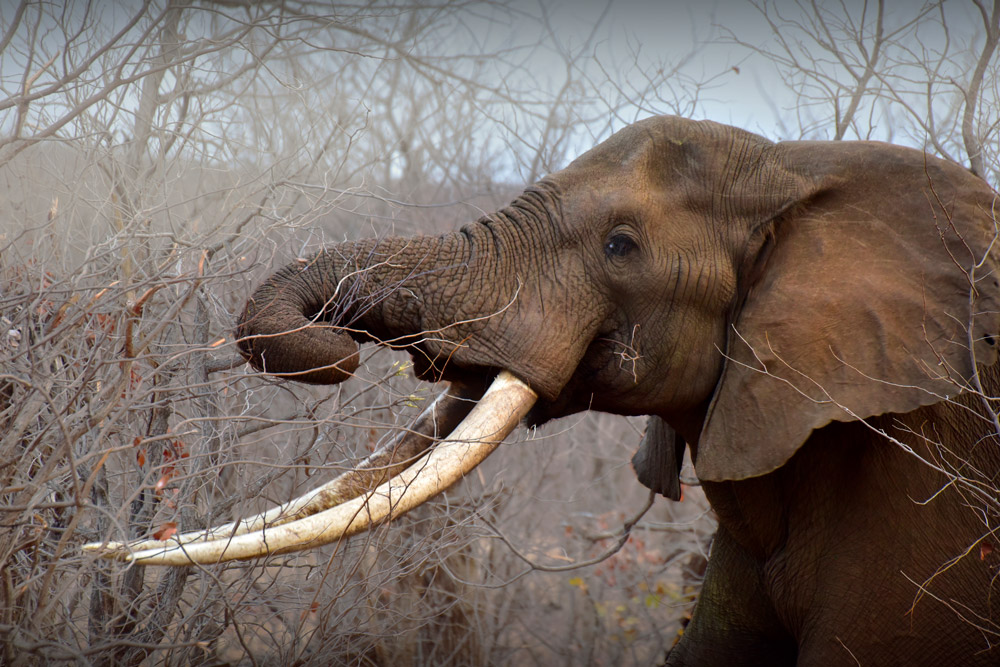
Later on, in a different area, the breathtaking Mandzemba stood in the pale grass, pulling tufts and shaking them briefly before eating. In the stillness of the bush, I could hear his chewing and shifting from one foot to another. His tusks looked as though they would surely plough through the earth if he put his head down. I saw him again some days later, heading for the water as the sun was going down. I could not have wished for a better sundowner.
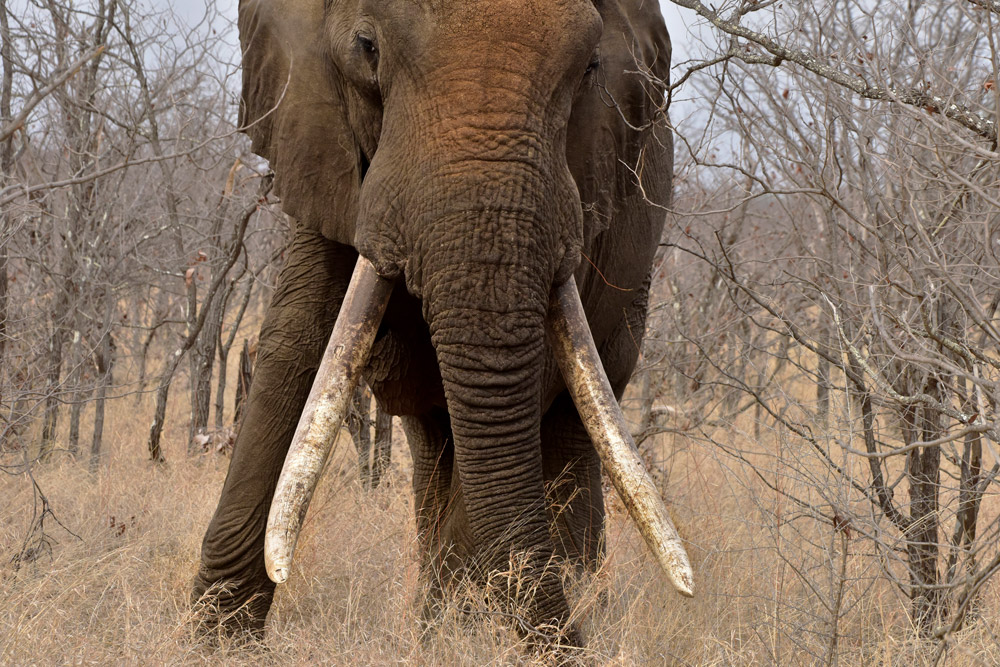
Because of the dry conditions, the waterholes were a constant hive of activity. In the late afternoon, the breeding herds would arrive from every direction.
Appearing through the stunted mopane bush, their pace would pick up when the water was in sight, and the younger generation would start running with the matriarchs, aunts and sisters keeping up.
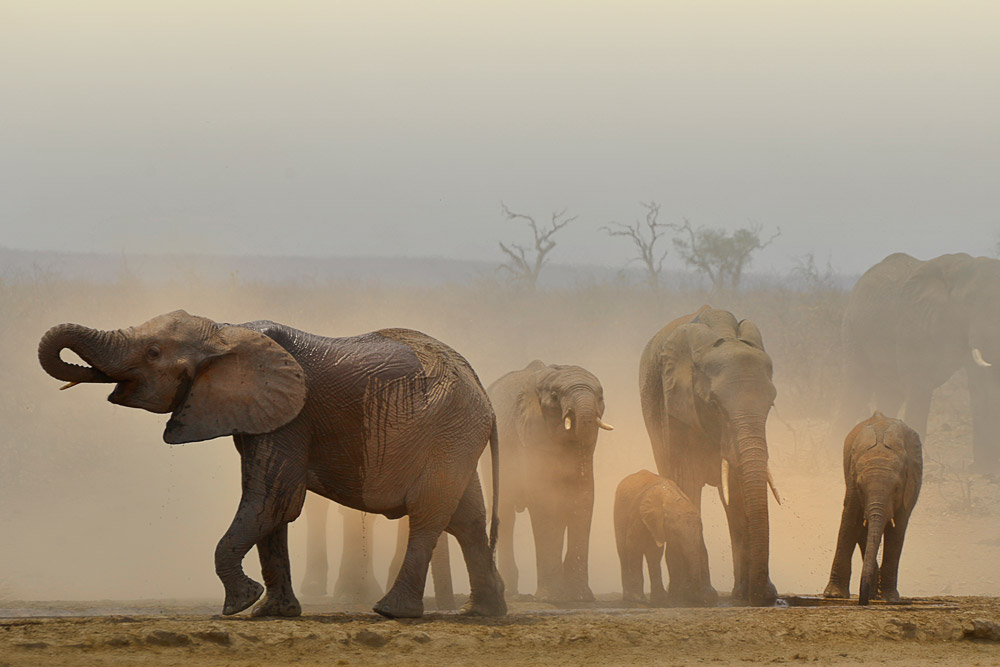
Their arrival, of course, would scatter the rest of the wildlife by the waterholes. The dust filtered through the air and light, giving me some delightful photos.
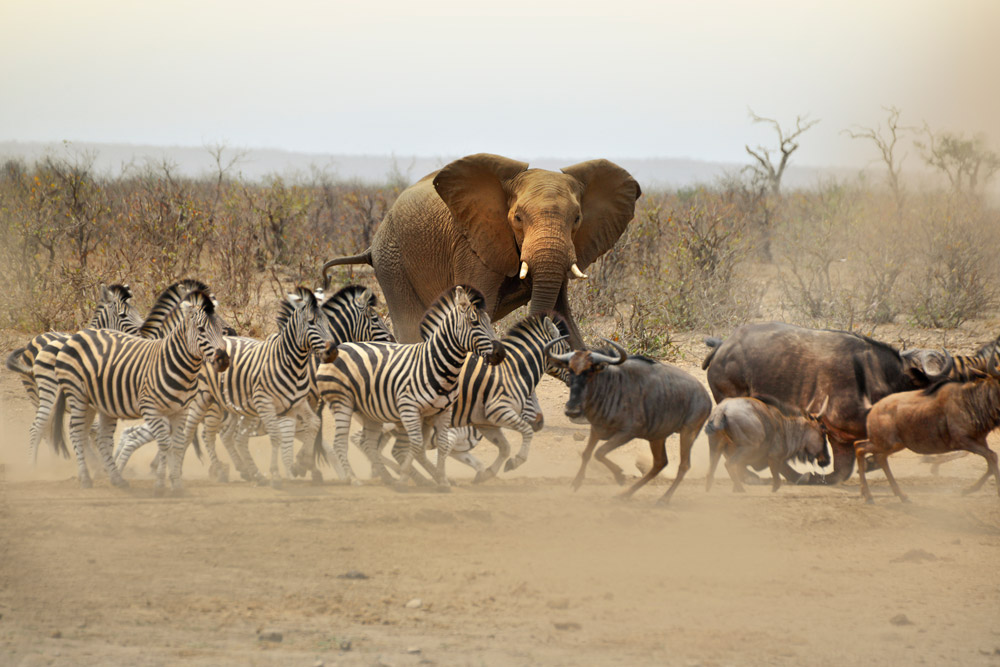
And once again, I found myself falling in love with these special Kruger elephants, wondering why I had stayed away for so long?
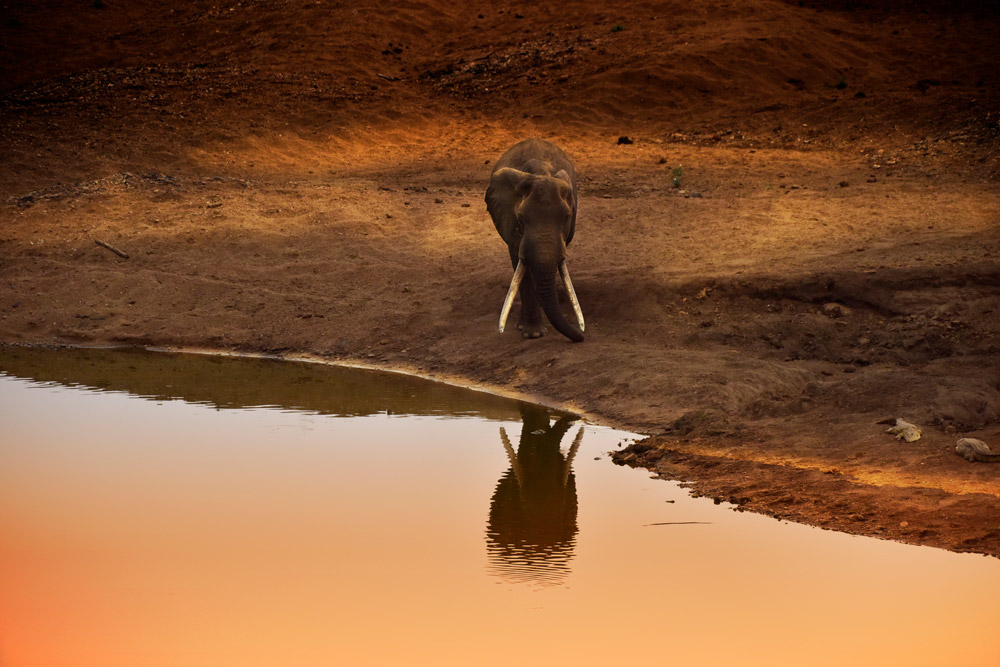

Travelling light
I enjoy camping; it somehow makes me feel more connected to wherever I am. And when it comes to camps: the smaller, the better. I enjoy the more rustic wilderness camps like Balule or Tsendze where like-minded people enjoy the peace and quiet.
When camping, I sleep in my very own little ‘tent-cot’, which is a bit unusual, but perfect for light packing. It folds out as a lounger would, and getting in and out is an art. At Shingwedzi early one morning, as I slid carefully out of my tiny abode in a half-asleep state, I was faced with about eight people all standing in a circle around my tent discussing what this ‘thing’ could be… it was a slightly awkward encounter, and I’m not sure who was more surprised!
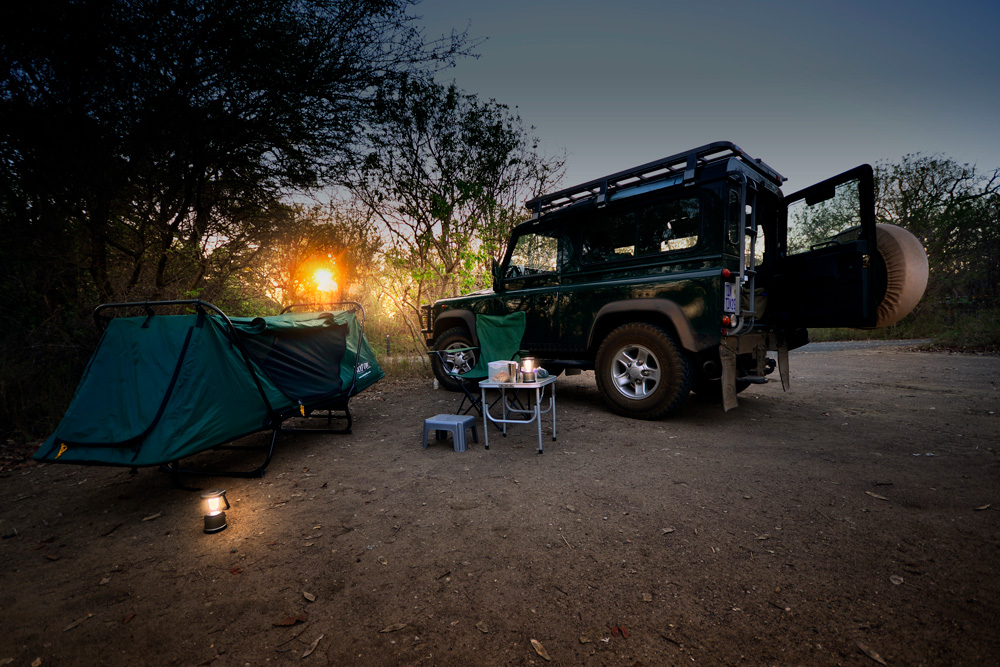
Part of the pleasure of a park like Kruger is the self-drive aspect and spotting wildlife yourself. The unpredictability of what you may see is exciting, and I always recommend that visitors who are coming for the first time take the opportunity of a self-drive after staying at a safari lodge, to experience another perspective.
Cheetahs are just thrilling to see, no matter where you are. While I was in Kruger, I happened to come across a mother and her two cubs who were finishing up their lunch – their interaction was captivating. Besides helping to clean each other in spots they would not otherwise reach, the grooming is essential for bonding. Fortunately, that wasn’t my last cheetah sighting, and I was thrilled to come across a solitary cheetah peering through the gnarled trunks of the mopane.

I can spend hours watching the chacma baboon troops in Kruger. Their relationships can be likened to that of human relationships, and the new babies are simply enchanting.
Every time I see a troop, I am reminded of my father’s favourite story:
Many years ago, we were driving through the Kruger in our family Pontiac, a classic car now, but then quite standard. My father had, up to that point, endless problems with the one windscreen wiper – no one could seem to get it to sit correctly. In those days, the baboons had a habit of jumping on cars to peer through the windows. A big chap jumped onto the Pontiac, grabbed the offending wiper, thus bending it, before jumping off again. Would you believe it? The wiper sat perfectly! My father took great delight in making sure the auto guys knew who had fixed the wiper.
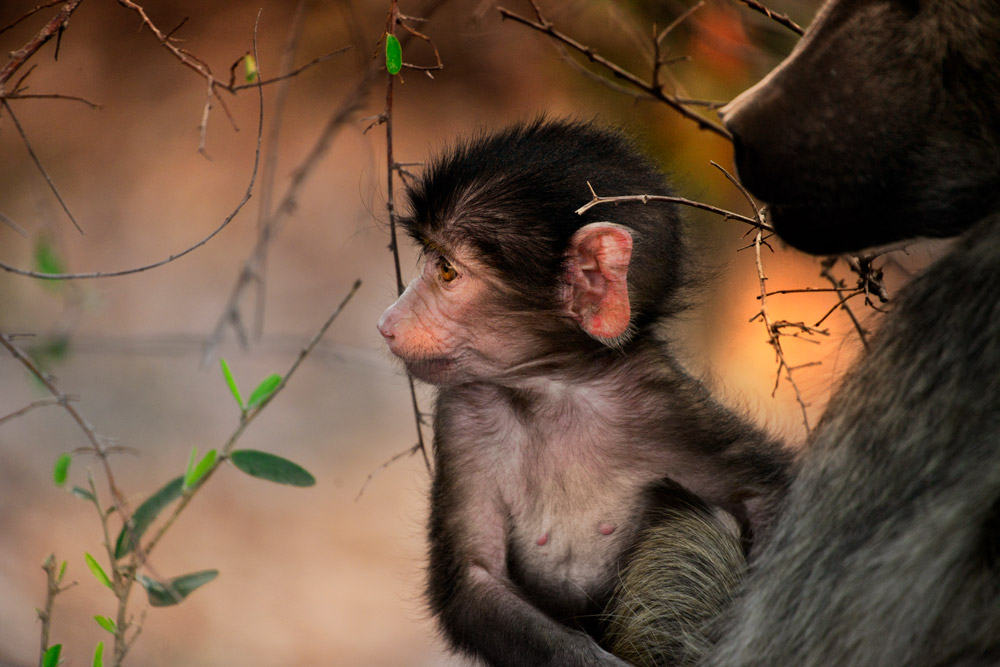
Natural design
As a designer, I am always blown away by the shapes, colours and structures of how everything in nature is ‘put together’. Zebras with their graphics, the way the lines move or are caught by the light. The elegant giraffe floating between the treetops in their geometric design and the icon of the national parks. The handsome kudu with sculpted horns and their soft female counterparts.
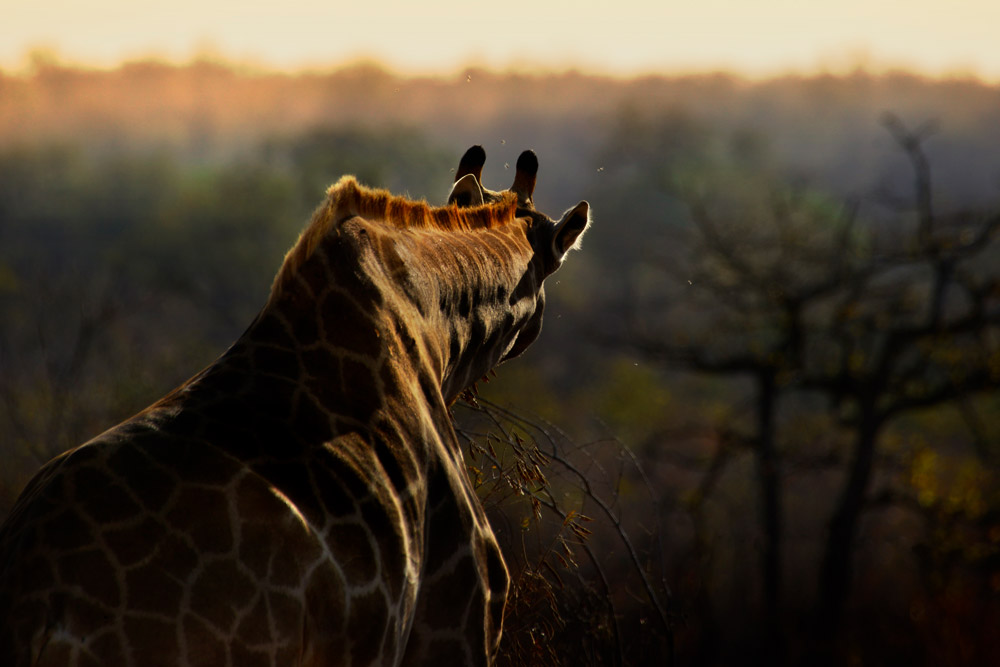
Overall I found that Kruger’s wildlife looked impressive and healthy, even though it was dry with the park holding its breath for rain.


Hippo love, lunch with a leopard and dagga boys
They may act like ‘blobs’ in the water with a nice yawn now and then, but hippos can be full of humour. I have seen them playing like puppies, and one thing was confirmed for me while in Kruger: those photos you see with the plants on their heads are sometimes on purpose.
There were hardly any plants in the water except for this one floating ‘garland’, and this chap made a point of going underneath it, to have it positioned on his neck, to present to his lady-love. He eventually got it right after several attempts, and I felt like they were now ‘married’, joined by the floating garland, amidst the cheers of my clapping.
I have always managed to get good sightings of leopards in the Kalahari and other parks, but no such luck with Kruger, having always just missed seeing it, or at such a distance that it is hardly a proper sighting. This particular trip, however, presented me with three beautiful specimens, the last being this little lady (see photo below) who seemed to be waiting for her mother. She sat in the tree, no more than four metres away, mostly just gazing at me. I sat there for hours, enjoying her presence.
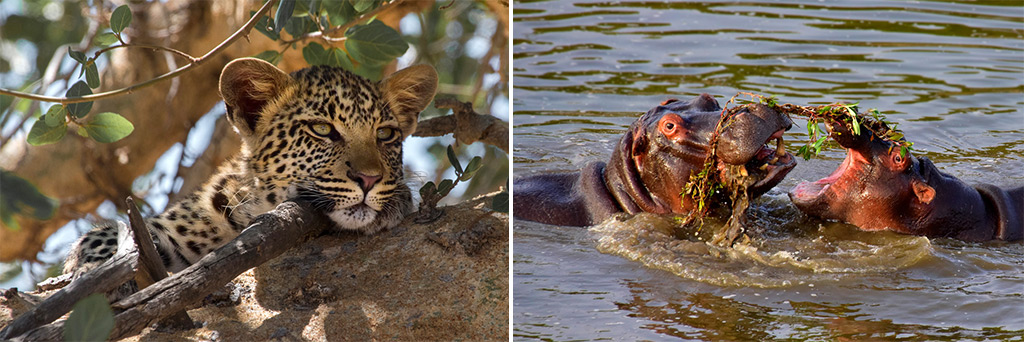
Someone once described the look from a buffalo as, “You owe me money”, a perfect description I thought. In earlier years, I remember watching massive herds stampeding in the dust. Years later, on other visits, it seems as though these herds have disappeared. Fortunately, luck was on my side, and I came across some decent-sized herds on this trip.

From my time spent in Kruger, one thing is for sure: I will be back shortly! I fell totally in love yet again with this gem we have just hours away.
My parents, John and Ann, who taught my sisters and me the love and respect for wildlife, have a memorial bench at Lower Sabie camp. If you ever there, please sit down and have a beer with them.
For accommodation options at the best prices visit our collection of camps and lodges: private travel & conservation club. If you are not yet a member, see how to JOIN below this story.![]()
ABOUT THE AUTHOR
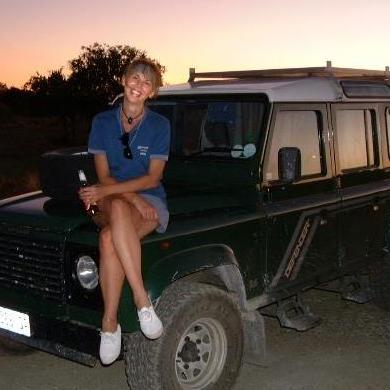 Passionate about Africa; Shirli’s energy, life, spirit and career revolve around the continent and its wildlife. Shirli cut her teeth in the world of advertising after art school, realising her forte was in the raw design field – added to this her love for wildlife and travel – she established her own design company called JADEWORKS, which has made a name for itself in the safari and tourism industry.
Passionate about Africa; Shirli’s energy, life, spirit and career revolve around the continent and its wildlife. Shirli cut her teeth in the world of advertising after art school, realising her forte was in the raw design field – added to this her love for wildlife and travel – she established her own design company called JADEWORKS, which has made a name for itself in the safari and tourism industry.
Photography was a natural evolution, and the more she experimented, the more she was captivated by the medium – the collaboration of design, travel and vision was initiated through the name of AFRICAALIVE.
She has travelled extensively in Africa and recently co-authored a photographic coffee table book called Africa’s Ultimate Safaris, in addition to becoming a co-owner and founder of THE WILDSIDE SAFARI COMPANY, an exciting new travel venture.
To comment on this story: Login (or sign up) to our app here - it's a troll-free safe place 🙂.![]()






